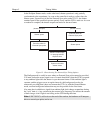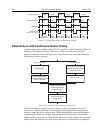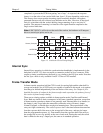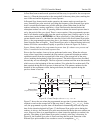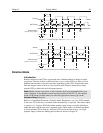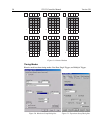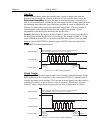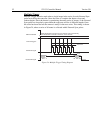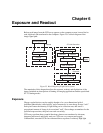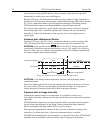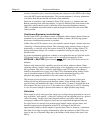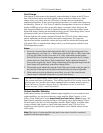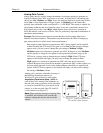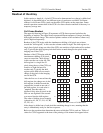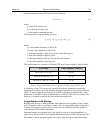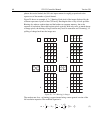
53
Chapter 6
Exposure and Readout
Before each image from the CCD array appears on the computer screen, it must first be
read, digitized, and transferred to the computer. Figure 25 is a block diagram of the
image-signal path.
CCD
Preamp
Cable driver
Incoming photons
Up/down integrator
Fast A/D
Display
ST-133A Controller
Computer
Slow A/D
Storage
Digital processor
Video
display
Camera
Interface board
RS PCI or USB 2.0
Interface module
TAXI or USB 2.0
Figure 25. Block Diagram of Light Path in System
The remainder of this chapter describes the exposure, readout, and digitization of the
image. Included are descriptions of binning for imaging applications and the specialized
ST-133 timing modes.
Exposure
Charge coupled devices can be roughly thought of as a two-dimensional grid of
individual photodiodes (called pixels), each connected to its own charge storage "well."
Each pixel senses the intensity of light falling on its collection area, and stores a
proportional amount of charge in its associated "well." Once charge accumulates for the
specified exposure time, the pixels are read out serially.
CCD arrays perform three essential functions: photons are transduced to electrons,
integrated and stored, and finally read out. CCDs are very compact and rugged.
Unintensified, uncoated CCDs can withstand direct exposure to relatively high light



